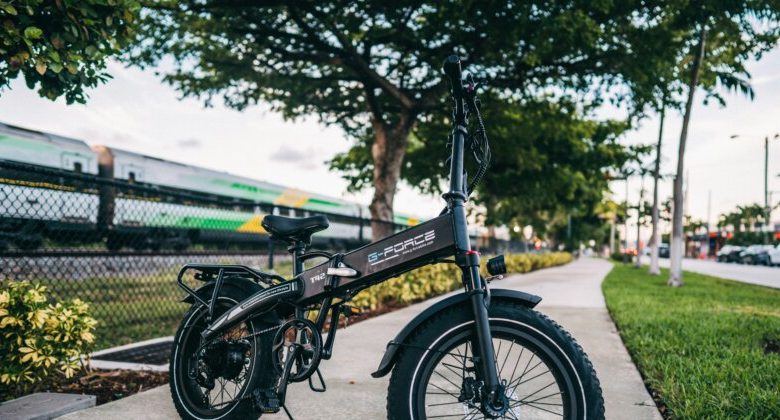What Step-Through Ebikes Reveal About the Next Wave of Transportation Tech

The evolution of transportation has always been shaped by innovation, accessibility, and efficiency. From traditional bicycles to electric vehicles, the industry continuously adapts to consumer needs, sustainability concerns, and technological advancements. In recent years, step-through electric bikes (ebikes) have emerged as a popular alternative to conventional commuting methods, providing an efficient and user-friendly way to travel. Their design eliminates the need to swing a leg over a high frame, making them an attractive choice for a wide range of riders.
The rise of step-through ebikes highlights a broader trend in transportation technology: a shift toward accessibility, eco-conscious mobility, and enhanced rider convenience. Unlike their high-frame counterparts, these ebikes cater to diverse demographics, including older adults, individuals with mobility concerns, and commuters looking for a practical alternative to cars. More than just a niche market, the growing demand for step-through ebikes signals a larger transformation in the way society approaches personal transportation.
As we explore the impact of these electric bicycles, it becomes evident that they are more than just a passing trend. They reflect a deeper movement toward sustainable, technology-integrated, and user-friendly transport solutions.
Advancements in Step-Through Ebike Design and Functionality
The evolution of electric bikes has led to significant improvements in performance, battery life, and overall convenience. Among the innovations shaping the industry, manufacturers are prioritizing accessibility without compromising on power and durability. A prime example of this approach can be seen in a step-through ebike by HeyBike, which integrates lightweight yet sturdy frames, advanced battery systems, and enhanced motor performance to ensure a smooth and efficient ride.
One of the defining features of step-through ebikes is their ease of use. Traditional bicycles, particularly high-bar models, can pose challenges for individuals with limited mobility or those wearing restrictive clothing. A step-through frame eliminates these barriers, making mounting and dismounting effortless. This accessibility factor is especially appealing to urban commuters who require a practical, no-hassle means of transportation.
Beyond accessibility, modern step-through ebikes boast high-capacity lithium-ion batteries, offering extended range and reliability. Riders no longer need to worry about frequent recharging, as newer models are designed to cover long distances on a single charge.
The Role of Ebikes in Sustainable Urban Mobility
As cities worldwide seek to reduce congestion and lower carbon emissions, electric bikes have emerged as a viable solution to urban transportation challenges. Step-through ebikes, in particular, align with the growing demand for sustainable and accessible alternatives to cars. Their ability to reduce reliance on fossil fuels, alleviate traffic congestion, and promote healthier lifestyles makes them an attractive option for commuters and recreational riders alike.
One of the most significant advantages of ebikes is their environmental impact. Unlike gas-powered vehicles, they produce zero emissions, contributing to cleaner air and reduced carbon footprints. As governments push for greener transportation options, electric bikes are playing an increasingly vital role in shaping urban infrastructure. Many cities are investing in bike-friendly policies, including expanded cycling lanes, charging stations, and shared ebike programs, further cementing their place in future mobility solutions.
The Integration of Smart Technology in Ebikes
The next wave of transportation tech is not just about electrification—it also involves seamless integration with smart technology. Modern step-through ebikes are increasingly incorporating advanced features that enhance convenience, security, and performance. Smart displays, GPS tracking, mobile app connectivity, and anti-theft mechanisms are becoming standard, offering riders a connected and data-driven experience.
One of the key advancements in this sector is the use of intelligent pedal-assist systems. These systems analyze real-time data, adjusting motor power based on terrain, rider input, and battery efficiency. The result is a smoother, more intuitive riding experience that optimizes energy consumption.
Moreover, mobile applications now allow users to monitor battery life, track mileage, and even customize ride settings. This level of connectivity not only improves the user experience but also enhances the longevity and efficiency of the bike itself. Additionally, integrated safety features such as automatic lights, turn signals, and proximity alerts contribute to a safer commuting environment.
The Growing Popularity of Ebikes Among Different Demographics
One of the most intriguing aspects of the step-through ebike revolution is its broad appeal. Unlike traditional bicycles or performance-focused electric models, step-through ebikes cater to a wide audience, including young professionals, older adults, and individuals with physical limitations. Their user-friendly design ensures that more people can embrace cycling as a viable transportation option.
Older riders, in particular, benefit from the ergonomic and stability-enhancing features of step-through ebikes. Many models offer upright seating positions, reducing strain on the back and joints. This makes cycling a more comfortable and sustainable activity, allowing individuals to stay active while maintaining independence.
Commuters who previously relied on cars or public transportation are also turning to ebikes as an efficient and cost-saving alternative. The ability to bypass traffic, avoid parking hassles, and reduce commuting time has made electric bikes a practical choice for city dwellers. Additionally, their compact design allows for easy storage, making them ideal for apartment living.
Future Implications for Transportation Technology
The rise of step-through ebikes is not just a passing trend—it is part of a larger shift toward innovative, accessible, and eco-friendly transportation. As technology advances, the role of electric bikes in urban planning, mobility solutions, and personal transportation will continue to expand. The emphasis on sustainability, affordability, and convenience suggests that ebikes will play a significant role in shaping future commuting habits.
One potential development is the integration of artificial intelligence in electric bikes. AI-powered systems could provide real-time traffic updates, suggest optimal routes, and even adjust ride settings based on user behavior. This level of automation would further enhance the commuting experience while promoting efficiency.
All in all, step-through ebikes represent more than just an alternative form of transportation—they are a reflection of the next wave of mobility innovation. Their accessibility, smart technology integration, and environmental benefits make them a compelling choice for a wide range of riders. As the transportation industry continues to evolve, electric bikes will play a crucial role in shaping sustainable and user-friendly commuting solutions.




